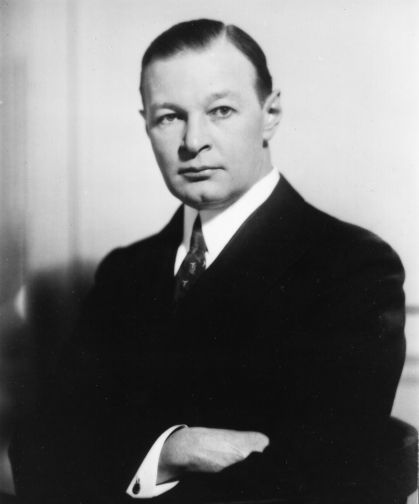
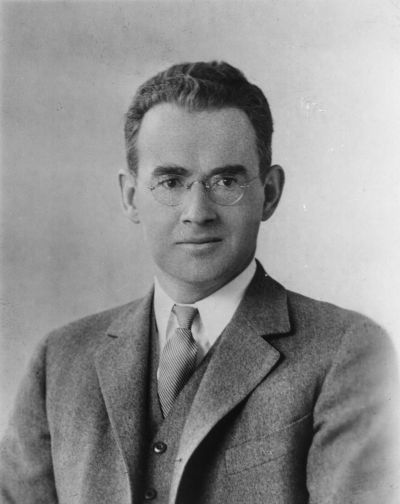
Pratt & Whitney Single-Row Radials
(Wasp and Hornet)
by Kimble D. McCutcheon
3 Jul 2015
| The remarkable story of Pratt & Whitney Wasp and Hornet single-row engines is one of a need being met by a visionary and his team. Four engines were designed and put into production in four years. Two of the designs are still in wide use today, more than 85 years after the first one ran. This is adapted from a presentation before the AEHS 2011 Convention |
Frederick Brant Rentschler, the Princeton-educated son of an Ohio machine manufacturer, turned his back on the family foundry business to become an Army engine inspector at the Wright-Martin Company during World War I. Wright-Martin built Hispano-Suiza V-8s under license. When the war ended, Wright-Martin was reorganized with Rentschler as President of the new Wright Aeronautical Corporation in Paterson, New Jersey.
Among the people he hired was George Jackson Mead, a MIT-trained engineer and Andrew Van Dean Willgoos, an engine designer. Wright continued to build Hissos, while the Mead/Willgoos team improved on its design and branched out into new water-cooled designs, working closely with Army, Navy and other engine companies in a rich variety of government-funded engine development projects.
 |
 |
| Frederick B. Rentschler | George J. Mead |
| Pratt &Whitney Aircraft Founders | |
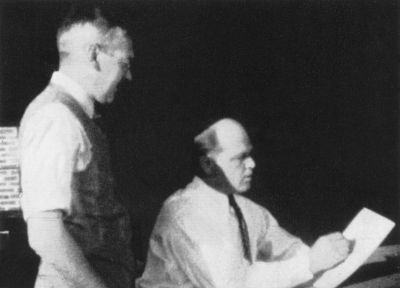 |
| Earl Ryder (L) and Andrew V.D. Willgoos (R) |
The U.S. Navy, enamored with the idea of air-cooled engines, funded Charles L. Lawrance to develop a 9-cylinder, 200 hp fixed radial — the J-1. This engine barely passed a 50-hour type test in 1922, and the Navy had little confidence in the Lawrance Aero-Engine Company’s ability to produce them in quantity. Navy finally forced Wright Aeronautical to acquire the Lawrance Aero-Engine Company in 1923.
Although Charles Lawrance came with the engine as Wright’s vice president, Mead and Willgoos were primarily responsible for developing the Lawrance J-1 into an honest engine. The J-4B was the first with reasonable reliability, and the J-5 Whirlwind was wildly successful.
With the 200 hp requirement met, Wright turned its attention to 400-hp-class air-cooled radials that would be able to replace water-cooled engines then in service. This work evolved into the Wright Simoon, a 1,176 in³, 350 hp, 640 lb 9-cylinder radial. Much of this new engine development work had been funded by Army and Navy, but a change in policy brought a huge reduction to direct funding of research and development in 1924. Rentschler had high hopes for air-cooled radials, but was unable to convince Wright Directors, a bunch of money-grubbing investment bankers who knew very little about engineering, to approve R & D funding at a level he thought necessary. Rentschler resigned from Wright Aeronautical on September 1, 1924.
 |
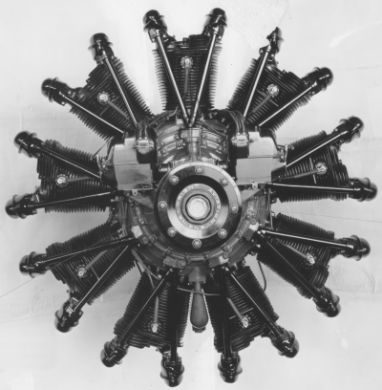 |
| Lawrance J-1 | Wright Simoon |
Rentschler began to seek funding for a new engine company. He simultaneously extracted a promise from the Navy to buy a new 400-hp class engine if it was running before the Wright Simoon completed its testing.
Rentschler had stayed in contact with Mead and Willgoos, who believed it was possible to build a true 400-hp engine that weighed the same as the Simoon and were excited about the idea of designing a new engine instead of one based on the Lawrance Js. They began to clandestinely design this new engine in Willgoos’ garage in June of 1925. Mead chose a bore of 5.750" and a stroke of 5.750", giving the engine a displacement of 1,343.8 in³.
The Pratt & Whitney Tool Company of Hartford, Connecticut, with available cash and space, was interested in the new engine. The Pratt & Whitney Aircraft Company was formed on July 23, 1925 with Fred Rentschler as President, George Mead as Vice-President and Andy Willgoos as Chief Designer.
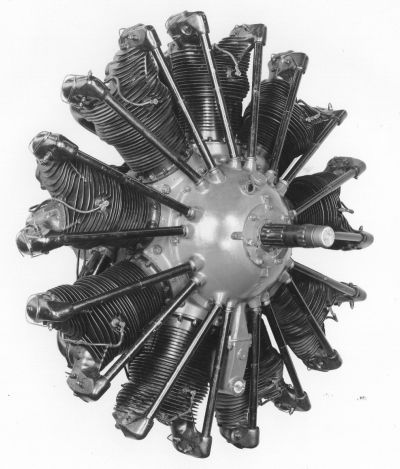 |
| Pratt & Whitney R-1340 Wasp |
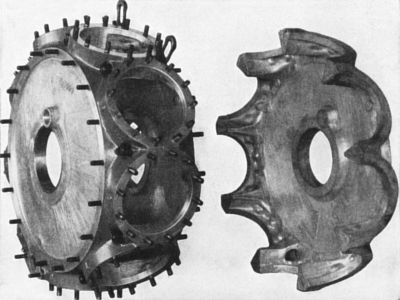 |
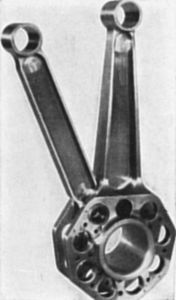 |
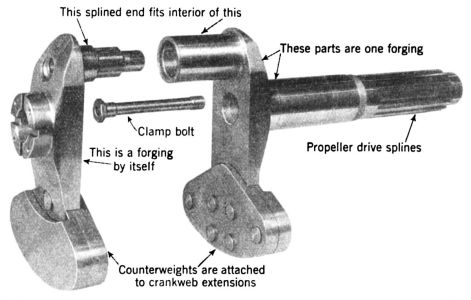 |
| Forged Crankcase | One-Piece Master Rod | Two-Piece Crankshaft |
| Wasp Innovations | ||
Work on the Wasp proceeded rapidly. Its assembly was completed on Thursday December 24, 1925 and first run on Monday December 28, 1925, one day after George Mead’s 34th birthday. Mead was nervous about running it too hard at first, because even though the design called for a forged crankcase and one-piece master rod, the prototype had a cast crankcase and split master rod. Still, it produced 380 hp during its first run, 410 on the second run and 425 on the third. The first production Wasp was delivered to the Navy on April 8, 1926. A total of 16,244 Wasp engines were produced until production ended in 1951. Some models produced 600 hp.
A little over two months after delivery of the first Wasp, Pratt & Whitney ran its first Hornet, a direct competitor to Wright’s 500-hp-class Cyclone series, which had been running in some form since 1924. The Hornet, which was essentially a bigger version of the Wasp, had a bore of 6.125", a stroke of 6.375", and a displacement of 1,690.5 in³. Depending on the model, it produced between 525 and 857 hp. It began shipping on March 4, 1927, and production continued until 1942, with 2,944 being produced.
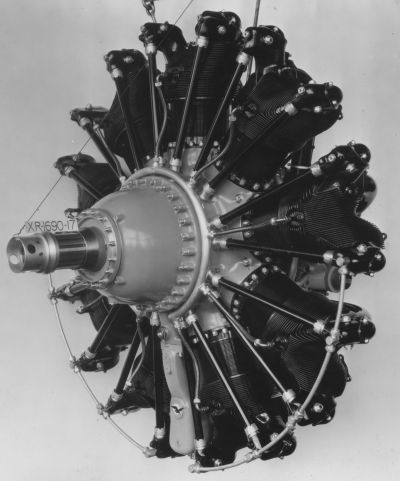 |
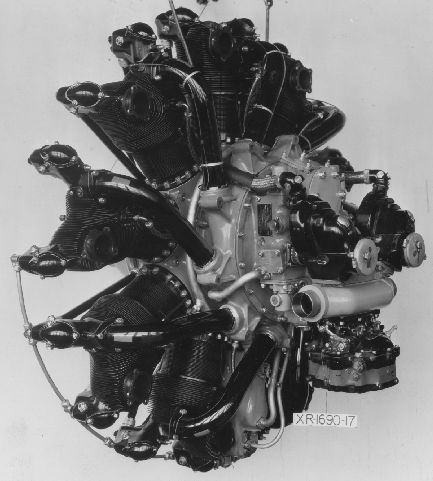 |
| Pratt & Whitney R-1690 Hornet | Pratt & Whitney R-1690 Hornet |
Seeking even more power, P&W first ran the 575-hp Hornet B on July 27, 1927. The first delivery was on June 27, 1928, but with a 6.25” bore and 6.75” stroke, the Hornet “B” was problematical on two fronts: The ~ 67 octane fuel that was available at the time was prone to detonation in the big cylinders; based on test reports, it appears to have been prone to linear and torsional vibration.
P&W began work on its first two-row engines soon after. These used larger numbers of smaller cylinders to mitigate big-cylinder difficulties. P&W never built another air-cooled engine with a bore of more than 5.75”. Only 446 Hornet Bs were built before production ceased in 1934.
 |
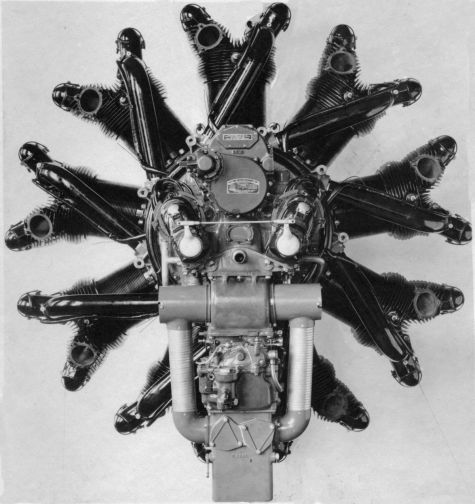 |
| Pratt & Whitney R-1860 Hornet B | Pratt & Whitney R-1860 Hornet B |
The last engine in the Wasp series was intended to fill a need for engines smaller than the R-1340. The R-985 Wasp Jr. first ran on November 9, 1929 and was first delivered on December 24, 1929. During its 24-year production cycle its output increased from 300 to 450 hp. The Wasp Jr had a bore of 5.188", a stroke of 5.188", and a displacement of 986.7 in³.
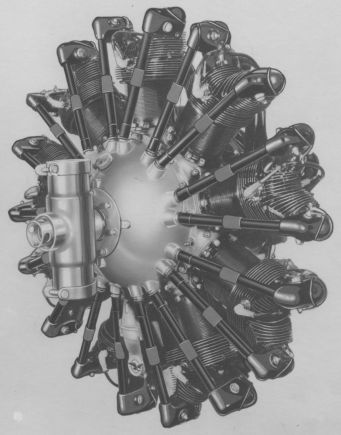 |
 |
| Pratt & Whitney R-985 Wasp Jr | Pratt & Whitney R-985 Wasp Jr |
The story of Pratt & Whitney Wasp and Hornet engines is a shining example of what can be accomplished by a small, bright, highly-experienced and motivated team working toward a common goal.